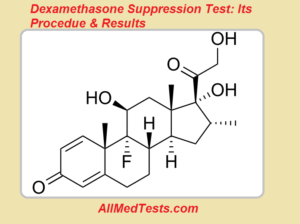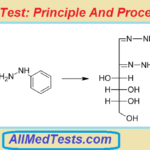While we are becoming the doctors and getting our college education, we study that adrenal glands are one of the most important parts of our body and that is why we need to make sure that these glands are working very well. While examining our patients, we need to diagnose any diseases in them properly and especially while we are dealing with adrenal glands, it becomes even more necessary to be cautious and observant during the examination. There are different tests which we can use to assess the performance of these glands and one of the most common and best test is called dexamethasone suppression test. In this test, we check the response of cortisol levels and any change in them while we try to inject our patients with dexamethasone. In this article, we are going to teach you the complete procedure and then at the end, we shall discuss different result which we get as a result of the test.

Dexamethasone Suppression Test Procedure:
Once we are done with the introduction, a student will want to know whether how do we performance this test? Well, this is something called procedure and in this section, we are going to discuss that now. So, let us begin with it now.
- In the first step of the test, a doctor will inject Dexamethasone in your body which is a strong medication of course.
- Once the doctor is done with the injection of this medication, it will draw out blood after some time so that he can take it away for measuring the cortisol levels.
Before we move on to discuss the results of this test, you should that there are two kinds of Dexamethasone Suppression Test called low and high dose test and in the results, they are discussed separately.
Dexamethasone Suppression Test Results:
We are going to tell you the different results for both low and high dose overnight tests. So, keep reading them below.
High-Dose Overnight Test:
In this test, the doctor or lab examiner will measure the cortisol levels when it is next morning after taking the test. He will then again insert 8 milligram of Dexamethasone after few hours and then take another measurement for Cortisol levels. The normal results in this test are if the reduction in the plasma cortisol level is greater than 50% and this when your tests are considered normal. For the standard test, this range will be 90% in case of reduction.
Low-Dose Overnight Test:
While we are doing low-dose overnight test, the normal ranges are something lower than 1.8 micro-grams and this is a standard when it is measured by the time 8 a.m. In the case of standard low-dose test, if this is measured on day 3, the cortisol level will be 10 micrograms and the tests are normal.
So, you learned different things such as procedure, definitions, why and how this test is performed, and then at the end, you learned about its results. If you have any questions related to the topic, you may ask us in the comments section below. Keep visiting our website for more free medical tests and guides.






Leave a Reply